Got Deer? Here are 10 Perennials That Deer will Avoid

Lee Miller is a professional landscape designer, garden blogger and author involved in the horticultural industry since 1996. Having started a gardening blog in 2010, she has written over 250 articles on general gardening, landscape design principles, gardening tips, planting, pruning, garden maintenance, feature plants and more. In addition, Lee Miller is the author of two books, A Guide to Northeastern Gardening, published in 2015 and Landscape Design Combinations, published in 2017. Lee enjoys sharing her experience with others and with trowel in hand since the age of five, her passion for gardening continues to grow.
As a garden designer for 22 years, I often meet with clients who have an ongoing issue with deer foraging their gardens. I had heard stories of new homeowners landscaping their entire property with beautiful blooms only to find that all their hard work was destroyed, and sadly within the first week of planting. While no plant is completely deer resistant, there are species that are avoided by our four-legged friends due to their taste, texture or aroma. If you are looking for interest to add to your landscape that will supply years of enjoyment, and not be foraged by deer, here are a few suggestions. [caption id="attachment_18655" align="aligncenter" width="400"]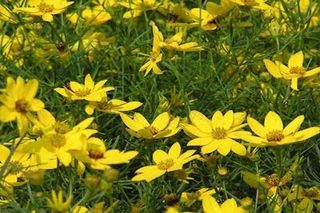
Coreopsis 'Zagreb'(Tickseed)[/caption] The first is Coreopsis or 'Tickseed', which is known for its delicate yellow or pink daisy-like flowers on lacy foliage, that bloom from early summer into fall. Coreopsis is hardy in USDA zones 4-8, prefers to be grown in full sun in a well-drained soil, and is drought tolerant once established. Coreopsis is available in several varieties ranging in flower size and colors ranging from yellow to pink, and reddish-orange to the newly hybridized yellow-orange bloom. I have found the 'Zagreb' variety (photo above) to be an excellent "deer resistant" bloom that produces a full array of repeat blooms for many years in the garden. [caption id="attachment_18656" align="aligncenter" width="400"]
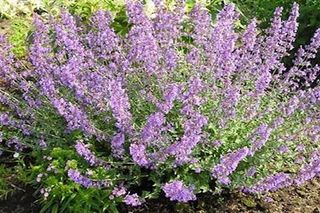
Nepeta 'Walkers Low' (Catmint)[/caption] Nepeta is a member of the mint family and is known for its distinctive gray-green aromatic foliage that is an attraction to cats when crushed. Nepeta displays soft lavender-blue blooms which are produced in early summer and continue through fall, giving a long-lasting display of color. The perennial is available in a variety of heights ranging from the smaller 18-24-inch tall 'Little Titch' to the taller 2-3-foot tall 'Mussinii'. Nepeta is hardy in USDA zones 4-9 and prefers to be grown in full sun to partial shade in a well-drained soil. Little care is required once this plant is established. [caption id="attachment_18657" align="aligncenter" width="400"]
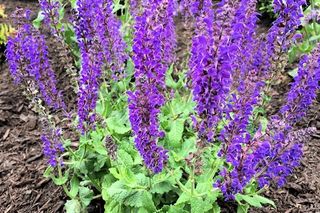
Salvia 'May Night' (Perennial Sage)[/caption] Salvia or sage thrives best in USDA zones 4-8, is "deer resistant" and blooms throughout the summer with regular dead-heading. There are many varieties of sage to choose from, ranging in height from the 10-12- inch tall Salvia 'Marcus' to the 20-30-inch tall 'Caradonna' variety. Species vary in color from the white (Salvia nemerosa 'Snow Hill") to rose-pink (Salvia nemerosa 'Sensation Rose') to the more popular purple varieties (such as Salvia nermerosa 'April Night', 'May Night' or 'Caradonna'). A very popular plant in the garden, Salvia is also an attraction to butterflies. [caption id="attachment_18658" align="aligncenter" width="400"]

Peony 'Karl Rosenfeld'[/caption] Peony displays large mildly fragrant blooms in late spring to mid-summer. Peony are hardy in USDA zones 2-8, prefer full sun to partial shade and like their roots protected. Peony are available in a wide range of colors including light pink, rose pink, white and yellow. Plants vary in stature depending on the variety, but generally range in height between 2-3 feet. These beautiful late spring/early summer-blooming beauties are an asset to any garden and blooms are followed by handsome foliage that lasts for the remainder of the gardening season. [caption id="attachment_18659" align="aligncenter" width="400"]
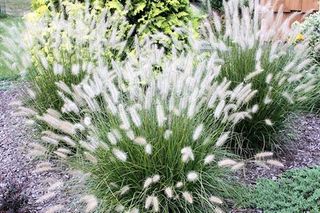
Dwarf Fountain Grass 'Hameln'[/caption] If you enjoy having ornamental grasses in your garden, they are also "deer resistant". There are many varieties of grasses in varying heights to choose from including the well-known Fountain Grasses Pennisetum Alopecuroides 'Hameln' (2-3 feet) or 'Little Bunny'(1-2 feet) as well as the Maiden Grasses Miscanthus Sinensis 'Gracillimus' (5-8') or 'Morning Light' (4-5') among others. Ornamental grasses are generally hardy to USDA zones 5-9 and prefer full sun and a well-drained soil. They will add grace and movement to your landscape and are well suited to a variety of garden styles. [caption id="attachment_18660" align="aligncenter" width="400"]
Gardening tips, videos, info and more delivered right to your inbox!
Sign up for the Gardening Know How newsletter today and receive a free download of our most popular eBook "How to Grow Delicious Tomatoes."
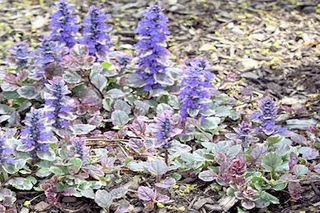
Ajuga reptans 'Burgundy Glow' (Bugleweed)[/caption] Ajuga (Bugleweed) is a groundcover perennial hardy in USDA zones 3-10 that displays bluish-purple blooms in early spring on 4-6-inch tall plants. Ajuga thrives in partial to full shade and serves well as a massed planting under trees or in perennial borders. Foliage remains evergreen in winter and takes on a rich bronze-burgundy tone to provide constant interest. [caption id="attachment_18661" align="aligncenter" width="400"]
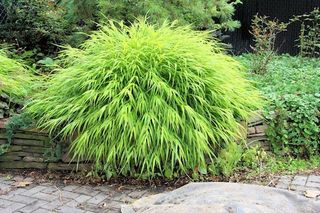
Hakonechloa macra 'Aureola' (Japanese Forest Grass)[/caption] Hakonechloa, or Japanese Forest Grass, is a grass-like perennial hardy in USDA hardiness zones 4-9 that prefers partial sun to shade and a moderately most soil. Wispy golden-green low arching stems cascade gracefully on an 18-inch tall and wide plant to add a dramatic look to the garden. This plant adds beautiful interest to the landscape when cascaded over a wall, as seen above. [caption id="attachment_18663" align="aligncenter" width="400"]

Allium 'Globemaster'[/caption] Allium (Ornamental onion) is an easy to grow bulb which has become increasingly popular in gardens over the past few years. Allium produces globe-shaped purple, white or pink blooms in late spring/early summer on tall stately stalks. Allium is hardy in USDA zones 4-9 and is best grown in full sun in a well-drained soil. Bulbs are best planted in fall (September-November) the season before you want them to flower. If you have an issue with deer or rodents, Alliums are an excellent addition, since they are looked upon as distasteful to the palate. [caption id="attachment_18662" align="aligncenter" width="400"]

French Lavender[/caption] Lavender is a well-known aromatic herb used over the centuries as a perfume and herbal remedy. It is hardy in USDA zones 5-9 and requires full sun and a well-drained, moderately dry soil. Lavender displays bluish-purple blooms on 24-30-inch grey-green foliage in mid-summer to early fall and is deer resistant as well as drought tolerant once established. Lavender also is known to attract butterflies. [caption id="attachment_18664" align="aligncenter" width="400"]

Stachys (Lamb's Ear)[/caption] Stachys (Lamb's Ear) is hardy in USDA zones 4-9 and displays silvery-white "wooly" leaves with a velvety feel. Tall stalks appear in summer with pinkish-pink blooms that last into fall. Lamb's Ear prefers to be grown in full sun to partial shade in a moderately moist soil. The interesting foliage of Stachys remains throughout the winter and serves nicely as a border plant in a perennial garden. This selection of perennials that can be utilized to create a colorful cottage garden or perennial border that is undesirable to deer. More structural elements to complement these plants could include, but are not limited to, Spirea, Butterfly Bush, Boxwood, Crape Myrtle and certain species of holly and cedar. Generally, the more aromatic and coarse the foliage, the more undesirable the plant will be to foragers. Remember, deer can be unpredictable creatures and your situation may vary, but these selections should get you started in the right direction for a successful and beautiful garden.
-
 7 Best Dwarf Tomato Plants
7 Best Dwarf Tomato PlantsHave a tiny growing space? Look for dwarf tomato seeds so you don’t miss out on summer’s juicy bounty.
By Susan Albert
-
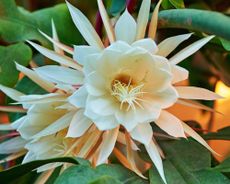 5 Night-Blooming Houseplants – Grow An Indoor Moon Garden
5 Night-Blooming Houseplants – Grow An Indoor Moon GardenThere is something uniquely special about night-blooming houseplants. Set the scene for a magical evening indoors with these fragrant flowering beauties.
By Amy Grant